
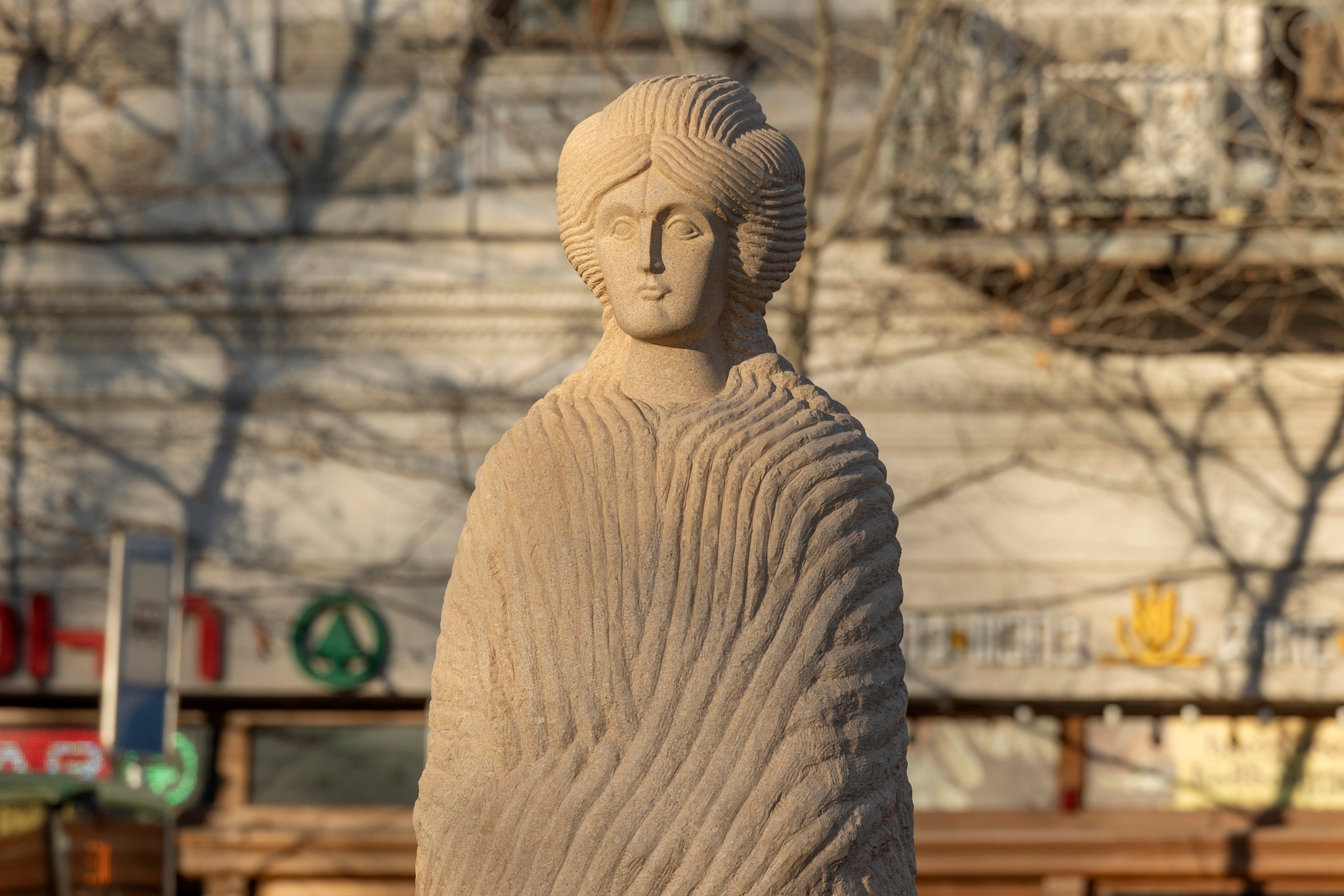
Art Beyond Indoors—Tbilisi Public Art Fund
It has only been a few months since a new beam of light emerged in the Georgian artistic scene—the Tbilisi Public Art Fund, which aims to develop the grounds of contemporary visual art. Thus, it fuels creative interactions in public spaces and eases access to contemporary art. Not to mention, Georgian artists have new opportunities to execute large-scale projects and establish a closer connection with society.
"Our daily round takes place in a common, public space. Therefore, what this public space suggests is of great importance—whether it is a memorial, identity-defining basis or simply a proper, well-furnished infrastructure",—notes Lika Chkuaseli, initiator and director of Tbilisi Public Art Fund.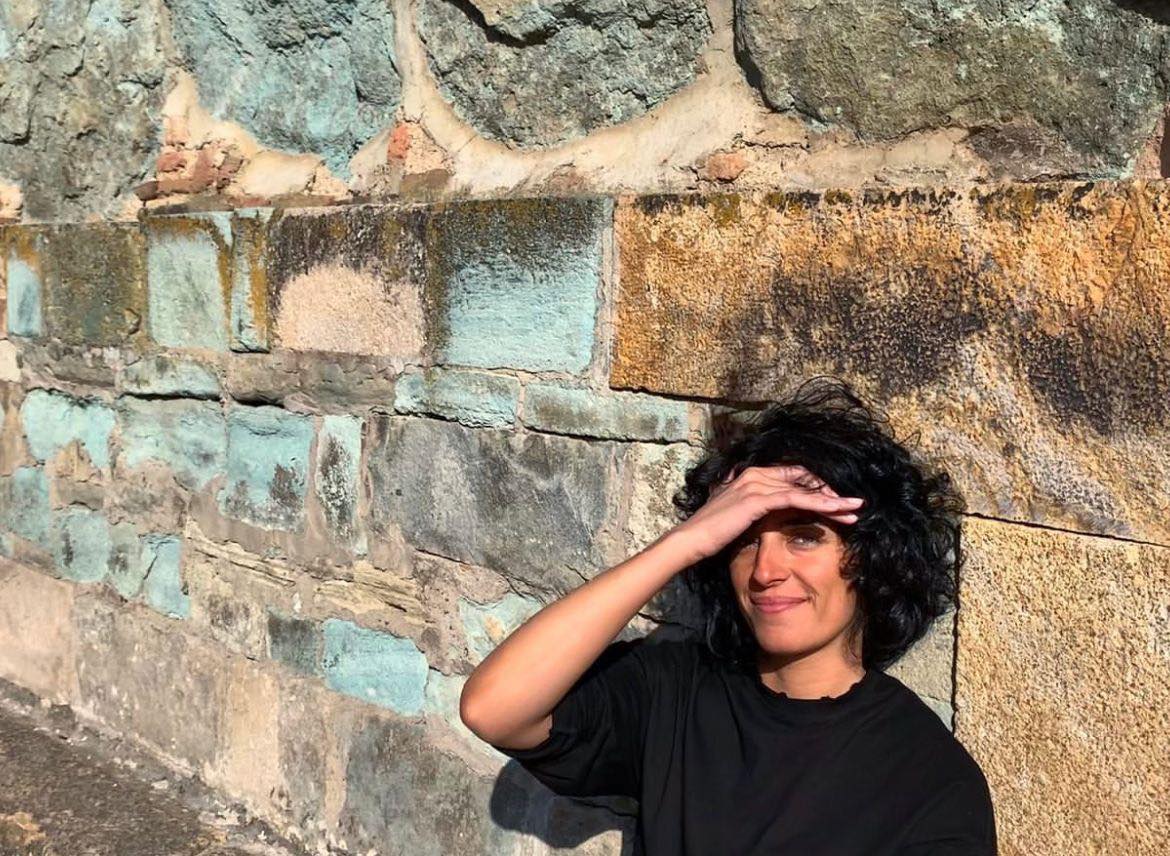 Lika Chkuaseli
Lika Chkuaseli
It is noteworthy that Lika is a contemporary art specialist and consultant. She has obtained an MA in Cultural Policy and Management in London. She also worked at the Metropolitan Museum of New York and headed the international gallery relations department of the Istanbul Art Fair. A few years ago, she became an art consultant—several prominent private collections were created under her provision. Now, she directs all of this experience to administer and develop her comprehensive project. She considers art to belong to the people - everyone.
It is Lika who tells us about the fund's mission, specificity, and functioning.
M: Lika, traditionally, we have to start with the groundwork—who initiated the fund's establishment, by whom it is owned, and with what resources does it operate?
First, I would like to thank Marketer for taking an interest in the Public Art Fund's endeavors. I am also glad I got to do the first extensive written interview with you. It is important that more people learn about the fund, its aims, and its activities, which is inherently the fund's mission—to make art an integral part of our daily lives.
I am accountable for instigating the establishment of the Public Art Fund and drafting its functional structure. The fund's founder and financier is the City Hall of Tbilisi Municipality. Immense efforts were made to actualize the concept of the Public Art Fund in the given reality.
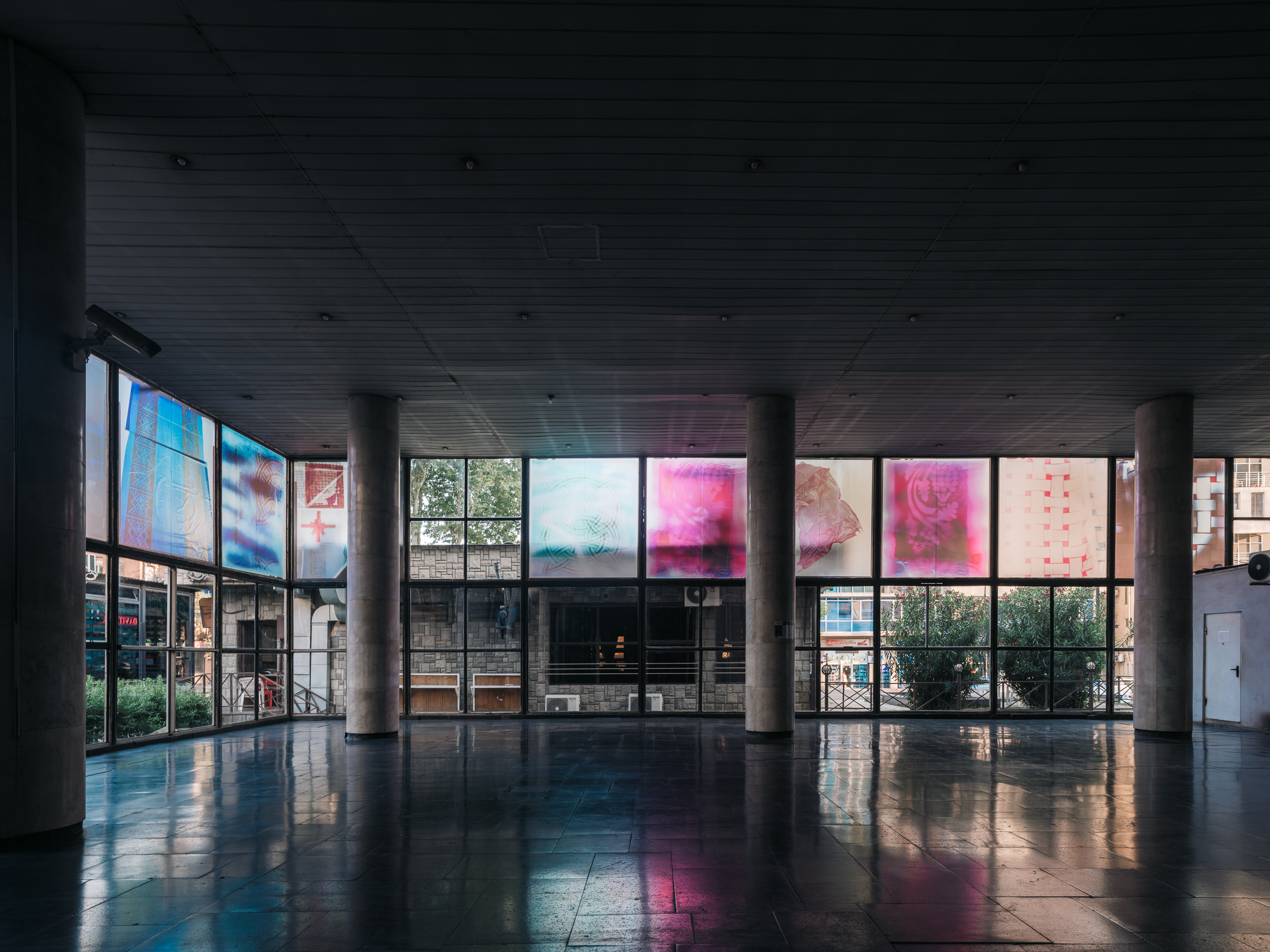
Ketuta Alexi-Meskhishvili, Georgian Ornament, 2023, 300 Aragveli Metro Station
M: To put it simply, what is the objective and core idea of this new contemporary art institution?
If we want art to enter our everyday life and achieve its primary purpose, which is to open the conceptual, aesthetic field for a person, then the public space must be permeated with this drive, pertinent artworks, and the overall quintessence. This kernel idea births a specific goal: to bring art to civilians through the public spaces that indeed belong to citizens and the creatives who must contextualize these spaces via their art. To meet this goal, it was necessary to set up a specific instrument, which appeared in the shape of the Tbilisi Public Art Fund.
M: What inspired the thought that this fund would take effect? Increased interest in contemporary art or, on the contrary, lack of awareness and demand for it?
The answer is somewhat trivial because, first of all, we relied on the experiences of the most developed cities in the world, where art is organically present in the outdoor space—an integral part of everyday life. Therefore, if we want to sustain a meaningful, full-fledged lifestyle in the city and encounter life as beauty or a thought process, we must open the way for the invigorating flow called art.
The city is not only the buildings that provide housing but also paved roads, sidewalks, pharmacies, and food venues. All these are necessary but insufficient prerequisites for the way of life: cognition, education, practicing culture, and even politics.
Thus, if we return to the earlier question, the answer will be both—interest in art has increased to some extent, and the country's developmental dynamics have matured the need for institutional support of this process. On the other hand, a lack of awareness or demand is a fault and deficiency that requires mending.

Nato Bagrationi, Flowers are for All, 2023, Gldani, Al. Gobronidze no.1
Over the past decades, hardship and poverty have reduced the scale of the artistic process and its impact on our lives and everyday life. A significant part of society became captives for narrow, domestic needs, although even during this period, several galleries were supporting artists, which equates to heroism at such times.
Additionally, in the last ten years, a number of exciting private galleries showing contemporary art have emerged in Tbilisi; the TAF Tbilisi Art Fair was established, private collectors appeared, and now biennials, triennials, and art festivals are held. Private initiatives and interest in the artistic field ensured a growing interest in the country and granted certain artists opportunities to go abroad. Naturally, this does not mean all problems have been dealt with, nor is art a luxury only wealthy societies should afford. On the contrary, the burgeoning of art, which is the firstborn of culture and erudition, is an imperative to coming to prosperity.
M: What sets your institution apart from other art spaces and establishments? What makes it unique?
Firstly, the contemporary art fund does not create an isolated, closed, conceptual, or museum space, which is of great importance for art. Rather, it focuses on the city—in a sense, our lived environment. The uniqueness of the fund is that it brings art to the city, as if at home, in a familiar, graspable, even somewhat dull environment.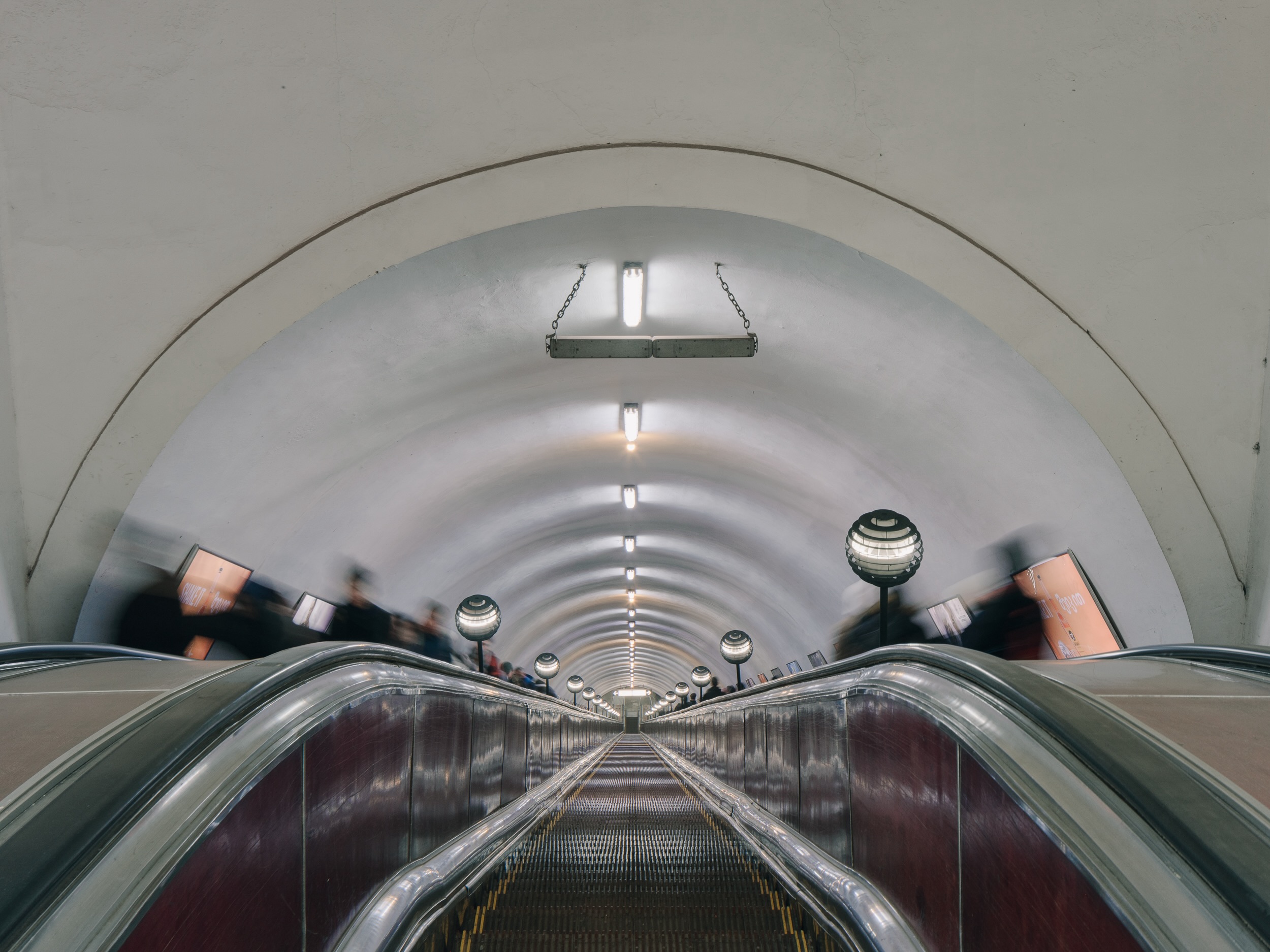 Sound Art, Metro Rustaveli Escalator, 2023; music: Nino Davadze, Tornike Margvelashvili, Nika Japaridze; design: Nikoloz Lekveishvili
Sound Art, Metro Rustaveli Escalator, 2023; music: Nino Davadze, Tornike Margvelashvili, Nika Japaridze; design: Nikoloz Lekveishvili
In this mode, art reaches a much broader scale. Gallery, museum, and exhibition spaces are primarily geared towards a small number of people. Besides, we don't even have an actual contemporary art museum in the country. The transformation of cityscape with the authored works is the key pregnant element by which a person perceives the living environment as bearing some charged message.
The space is not focused on some sterile, random marker, such as a tree or a crossroads, but an intentional, thought-through, accented cultural monument that is in dialogue with its surroundings. Think about the square of Avlabari, which holds to be one of the clearest examples.
M: What are you referencing specifically?
This historical district of the city, abundant with historical monuments of identity, was utterly transformed during the Soviet period. The long, multi-entrance residential building behind the metro station gained paramount dominance in the urban fabric of this area. The unique structure of the metro station was largely overshadowed by the change in the facade and function of the lower floor of the mentioned building, which kindled a lamentable perception of the old Soviet square space that is most accurately summed up by one word for us—nineties.
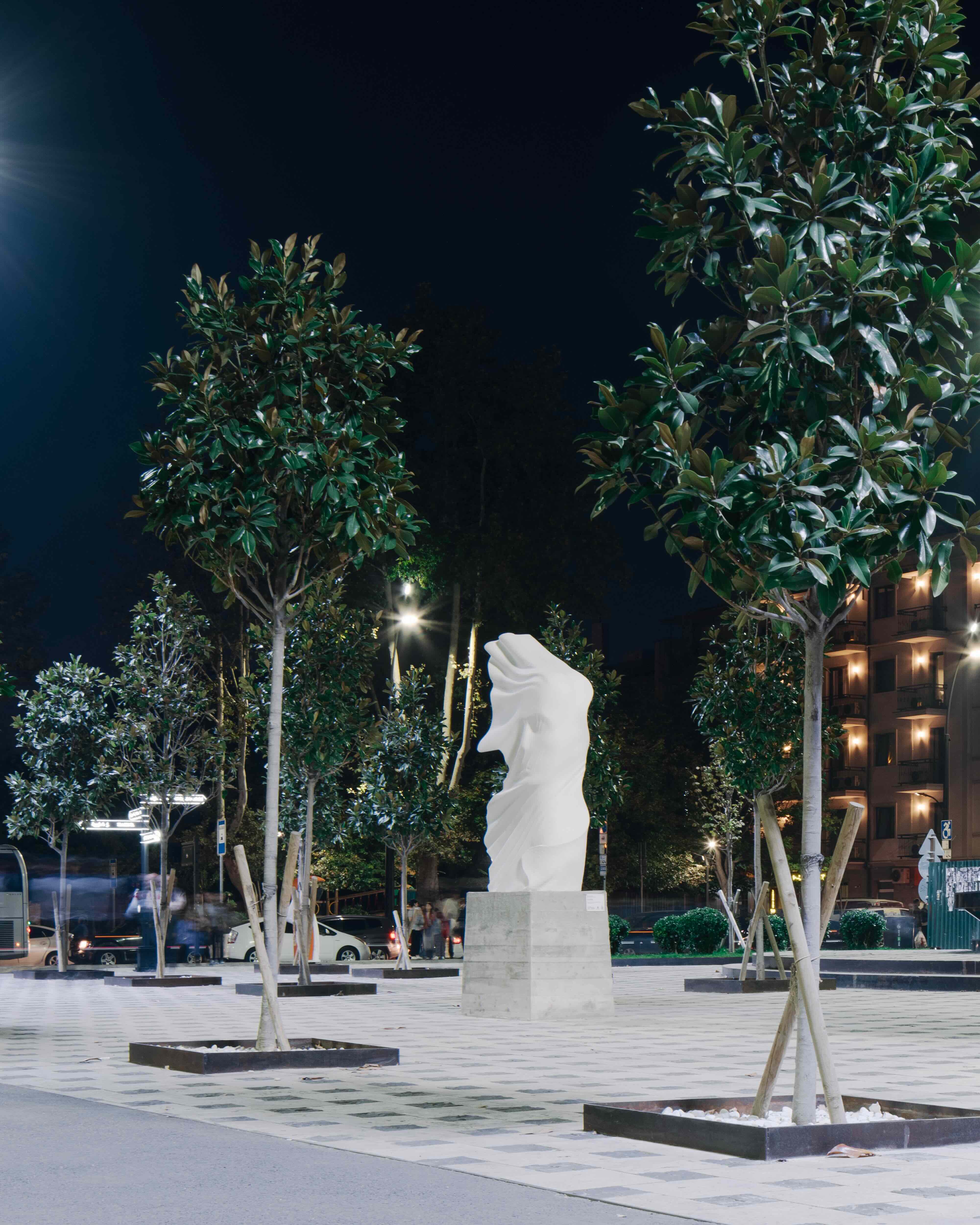
David Natidze, Resistance, 2023, Avlabari Square
Then, in the 2000s, the installation of a vertical green facade on the metro building and a fountain in the center of the square served as a cosmetic repair, which also wore out over time. This year’s extensive reconstruction of the square adds a brand new visual appeal and dimension to this space. We noticed this early on and, from the get-go, started thinking about how we could pursue the mentioned space for the fund’s goals. And that's why, as soon as the landscaping of the square was finished, not so long ago, we could put up a very understated but individual and remarkable work there. By the way, at one time, during the Soviet period, a four-figure monument of 26 commissars stood on this square, which was destroyed in 1992. It was demolished likewise to the country where art was in complete service of the ideology. And now, 30 years later, after chaos and scarcity, we can still use the same space as a platform for art that is free, independent, and alive.
M: A few days ago, we witnessed another new work—Giorgi Khaniashvili's sculpture "Braids of Time." It was followed up with a huge internet response, and I am curious: What do you account for such a grand scale of interest?
Giorgi Khanashvili's "Braids of Time" is truly astonishing and a landmark piece. It was a sort of debut for him, even since it was his first time to work on a stone of such monumental size. Most importantly, the sculpture was erected in the public space of the greatest historical context, which drew all the attention, interest, concern, and, one can say, even civic activity because thousands of people expressed their attitude towards it.
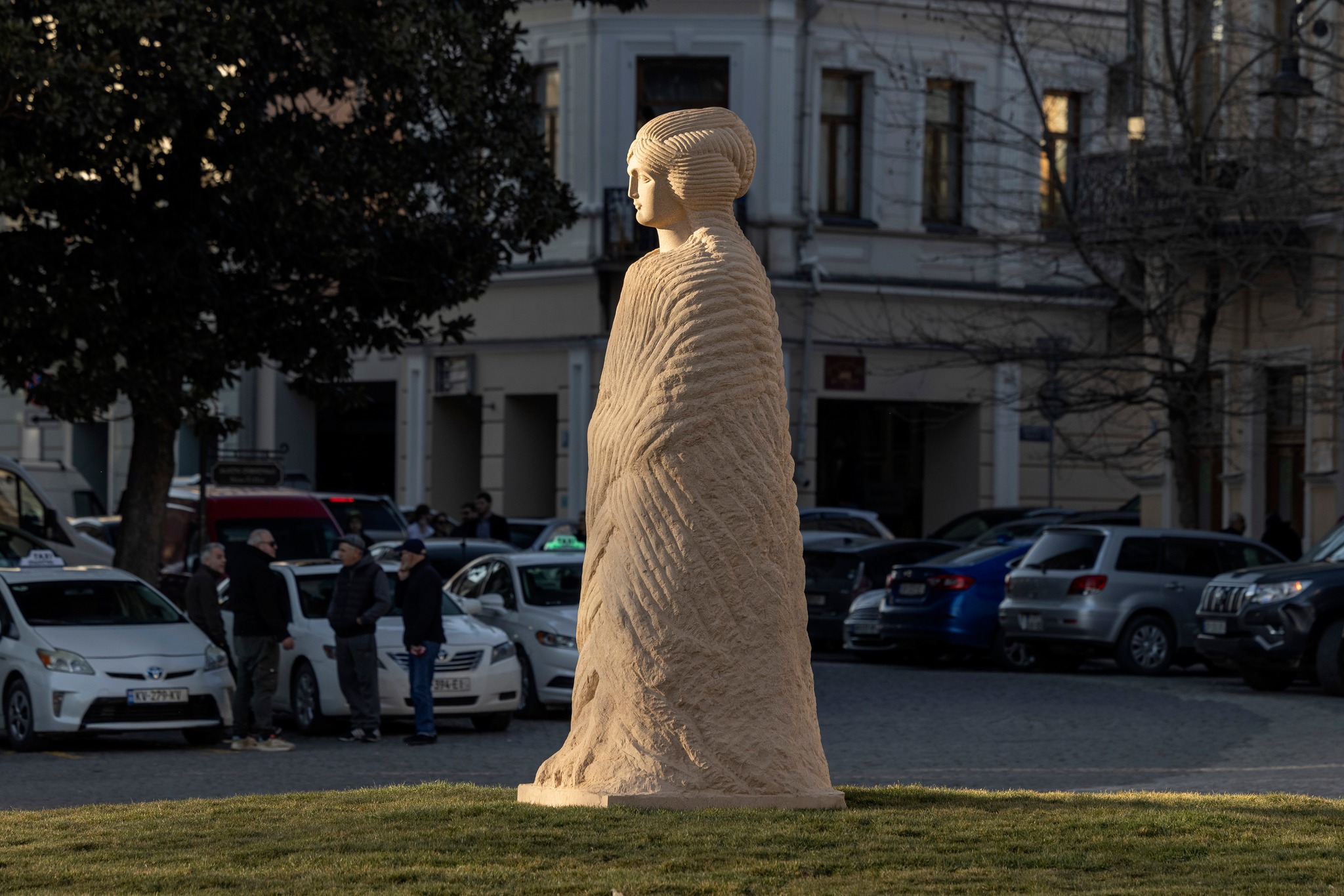 Giorgi Khaniashvili, Braids of Time, 2024, Saarbruecken Square
Giorgi Khaniashvili, Braids of Time, 2024, Saarbruecken Square
Therefore, it can be safely said that "Braids of Time" most accurately met the goal of the fund’s conceptual mission—to connect and introduce civilians to contemporary art through public space. In comparison to this goal, everything else is secondary. Any question is legitimate: if it is liked or disliked, the visuals, location, dimensions, material, etc. The discussion process began—began entirely democratically and painlessly. The fund's activity is also unique in that it does not interfere with the public space, does not transform it, and does not burden itself with the function of attaching new content, which would certainly happen if we were concerned with erecting permanent monuments. The fund intends to use public places in the city as temporary exhibition sites.
M: How else do you plan to promote contemporary art? What other course of action do you intend, and why would it be the most appropriate or scalable?
The principal uniqueness of the fund is its access to people. This is the scale that the fund's activities provide. The examples of other countries prove that such an approach is correct, necessary, and essential. For instance, in New York, a city with the leading museum institutions, as well as very established and big commercial galleries, they still saw the need to establish a public art fund in the city to bring art into the everyday life of even more people.
Regarding the promotion, we are only at the beginning of the process. The fund will continue to finance artists in the future, supporting the materialization of new ideas in different sites throughout the city. We take over squares, facades, streets, yards, and even landscapes. Most importantly, this entire process is backgrounded with selection, discussion, collaboration with industry professionals, hosting discussion platforms, and providing coverage. Ultimately, we end up with the main product of art—a dialogue between the author, the space, the viewer, the inhabitant, the citizen, and the idea. The main goal is the content, and the art monuments are only a means of understanding.
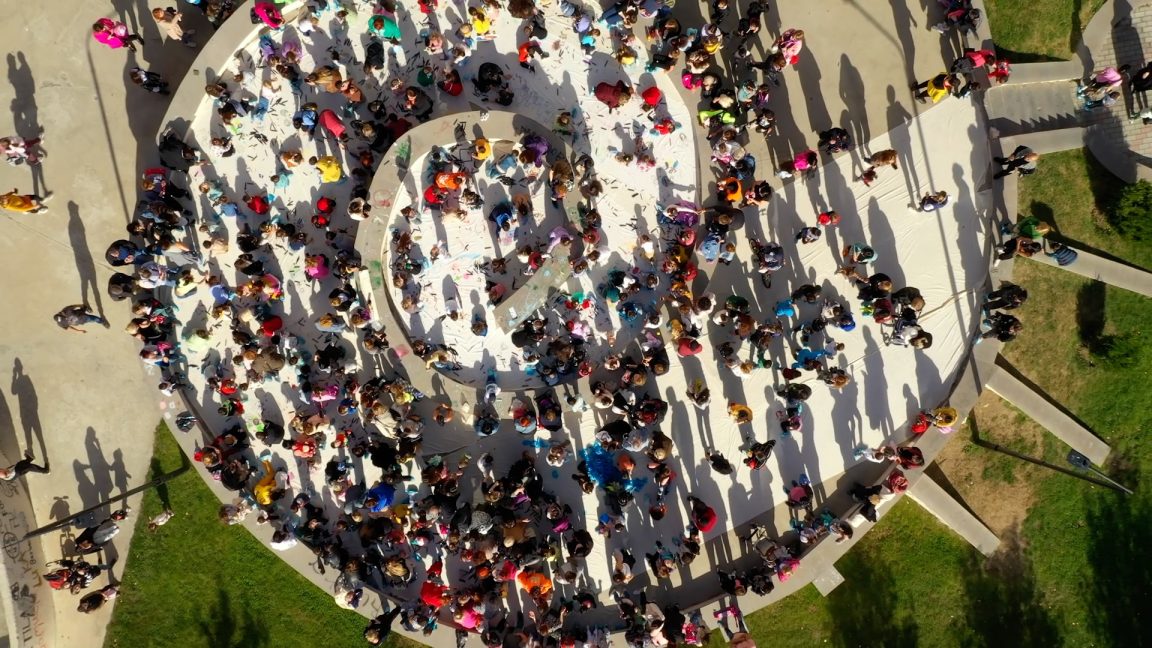
Sunday Art Playground: Gldani
In order to ensure sustainable access to public art and to form new connections around the works, it is necessary to adopt an appropriate educational program. That is why we have developed several such programs this year, which will be launched step by step. This will guide the public to better understand the contexts of the works and the role of public art. For this, it is necessary to refine such services that will facilitate art communication with the audience. The public will be offered a variety of activities designed for different age groups.
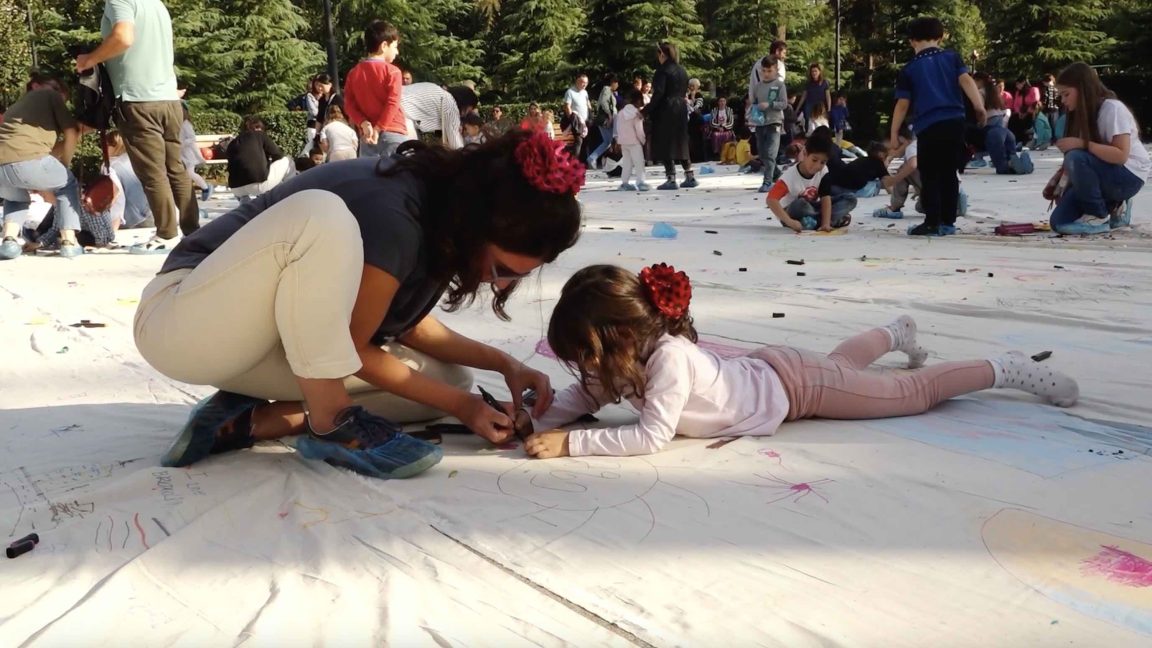
Sunday Art Playground: Kikvidze Park
At present, together with Lika Chkuaseli, the Public Art Fund is represented by projects manager Ellen Kapanadze and head of the educational program Irine Jorjadze. They conjointly supervise the announcement of open calls, pre-scouting of public spaces, recruitment of the new jury for each call, encouragement of artistic writing by art experts, and conducting meetings, seminars, discussion panels, and workshops alongside various art-related activities in public schools. They also oversee all aspects related to the creation, placement, viewer attraction, inciting discussion, and promotion of the works.
Photo courtasy of Guram Kapanadze, and Grigori Sokolinski
Link to the article: https://www.marketer.ge/tbilisis-sajaro-khelovnebis-fondi/




